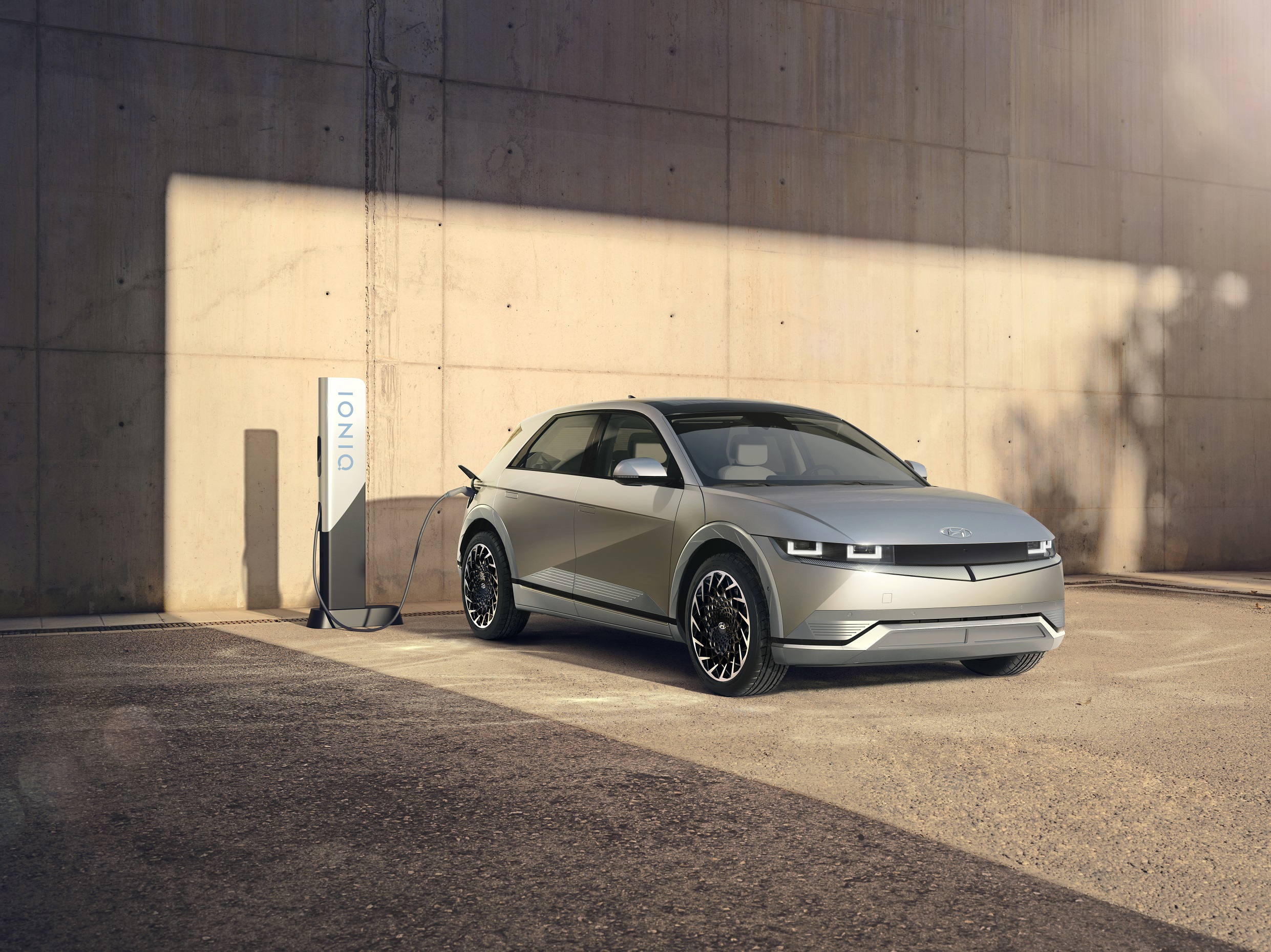Just now, IONIQ, the electric vehicle brand exclusively owned by Hyundai, officially released its first mass-produced model, IONIQ 5. Here are several key points about the new car.

- IONIQ 5 is built on Hyundai’s electric vehicle platform, E-GMP, which supports both 400V and 800V charging stations and features a vehicle-to-load (V2L) function with a maximum output power of 3.5 kW.
5%E6%8B%A5%E6%9C%89%E7%8B%AC%E7%89%B9%E7%9A%84%E7%94%B5%E5%8A%A8%E6%B1%BD%E8%BD%A6%E8%BD%A6%E8%BA%AB%E7%BB%93%E6%9E%84%E6%AF%94%E4%BE%8B%EF%BC%8C%E8%BD%B4%E8%B7%9D%E9%95%BF%E8%BE%BE3%2C000mm_20210223162152.jpg)
- In terms of size, the car is 4635/1890/1605 mm in length, width, and height respectively. The wheelbase is 3000 mm.

- The central armrest of the front row is particularly unique, as it can slide back 140 mm.

- IONIQ 5 offers a solar roof option, which uses solar energy to charge the battery and increase the driving range. This is the first case in mass-produced cars, but the charging efficiency needs to be analyzed after obtaining the actual car.
- IONIQ 5 promotes environmental protection, as sustainable and environmentally friendly materials are used in the seating, ceiling, door panels, floor mats, and armrests.
- The battery pack offers two configurations: 58 kWh and 72.6 kWh. The 72.6 kWh rear-wheel-drive long-range version has an NEDC range of 600 km. There are two drive systems available: rear-wheel-drive and all-wheel-drive, with a top speed of 185 km/h. Additionally, IONIQ 5 is equipped with a heat pump system.- Power-wise, the top-performance version can output up to 225 kW with a peak torque of 605 N·m, achieving 0-100 km/h in 5.2 seconds;
- In terms of driving assistance, the IONIQ 5 is equipped with Hyundai’s latest SmartSense advanced driver-assistance system, with hardware sensors currently unknown, but offers the HDA2 highway driving assist function, which is likely to be ACC and automatic lane changing.

From a configuration perspective, the IONIQ 5’s strength is decent, especially with its 800 V charging capability that gives it an advantage in charging speed. Although there aren’t many 800 V chargers currently available, it does leave plenty of room for future expansion. Additionally, the onboard power supply function may not be a novel feature, but it is quite practical for friends who enjoy traveling.
🔗Source: Hyundai Official Website
This article is a translation by ChatGPT of a Chinese report from 42HOW. If you have any questions about it, please email bd@42how.com.
